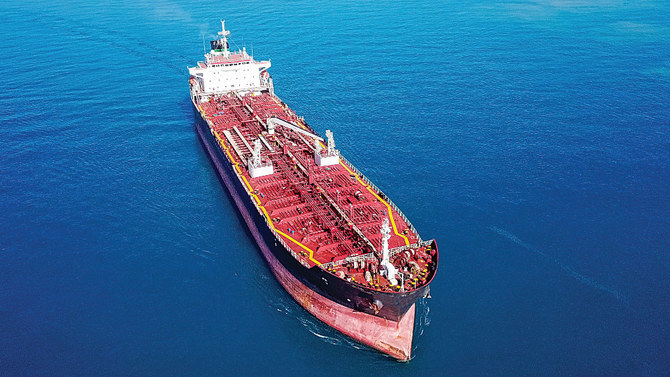
Introduction
Yemen
continues to face several structural challenges on a humanitarian, security, and economic level. Several interlinked factors have added to
the complexity of the Yemen conflict. The Arab country has long suffered
from abject poverty, foreign interventions, and internal strife. The armed
conflict has already claimed over 370,000 lives and resulted in an immensely
fragile security environment that is also disrupting the supply of humanitarian
aid.
In 2021, Yemen was
ranked the world’s most fragile state in the FragileStates Index.
This paper seeks to highlight the factors contributing to the country’s instability and the issue of FSO Safer, an aging supertanker, moored off Yemen’s Red Sea coast. The tanker is reportedly in a state of decay and can soon break apart or explode if immediate action is not taken. According to reports, the tanker is holding four times the amount of oil spilled by the Exxon Valdez, which is enough to make it the fifth-largest oil spill from a tanker in history.
The UN is keen to
resolve this issue and prevent an environmental catastrophe. According to
the UN, “A massive spill
from the Safer would destroy pristine reefs, coastal mangroves and other sea
life across the Red Sea, expose millions of people to highly polluted air, and
cut off food, fuel and other life-saving supplies to Yemen, where 17 million
people already need food aid. “Coastal
communities would be hit hardest. Hundreds of thousands of jobs in the fishing
industry would be lost almost overnight. It would take 25 years for fish stocks
to recover. The cost of cleanup alone would be $20 billion.”
The negotiated
agreement between the concerned parties can act as a basis for cooperation to
constructively resolve issues of common concern. This issue can also serve as a case study for the international
community to work cohesively toward crisis prevention rather than crisis
management in Yemen and thus contribute to international and regional efforts
to build an
inclusive security
architecture in the region.
Background of the
Yemen conflict
There are several
dimensions to the Yemeni conflict. First, it is a civil war between opposing
forces with conflicting future visions for the impoverished country. Second, it
is a cross-border conflict between the Saudi-led coalition (SLC) and the
Houthis. Third, a proxy war is being played out between Saudi Arabia and
Iran with the latter providing the Houthis with weaponry, which is used against
targets within Saudi Arabia. The
fourth and equally important issue that is adding to the woes of Yemen is the
ongoing war against violent extremism and terrorist networks including
Al-Qaeda.
Before the outbreak of
the conflict, civilians in Yemen were considered amongst the “most armed”
people in the world. The ongoing conflict and the resultant proliferation of
small arms to non-state actors have increasingly caused the security
environment to deteriorate, placing tremendous constraints on future
disarmament, demobilization, and reintegration (DDR) efforts.
The conflict, which
has created the world’s worst humanitarian crisis, has entered its seventh year
but a political solution to the crisis remains elusive. The resignation of
the Hadi government and the establishment of a Presidential Leadership Council
(PLC) are seen as the fruit of efforts aimed at finding a political solution
acceptable to the Yemenis. The UN-brokered truce is also seen as an opportunity
to initiate a political dialogue as well as a step to renew confidence building
among different stakeholders.
However, the Houthi rejection of the PLC and the lack of confidence over its abilities expressed by common Yemenis raise fears that the body may not be able to achieve the desired results. For the transitional body to succeed, the international community should lend its support to help the war-torn country emerge from multiple crises. Currently, Yemen has approximately 2 million armed fighters belonging to various factions and networks.
Environmental concerns
The country is also
acute water shortage and the available water is highly contaminated. In
addition to that climate change is causing flash floods in the country thus
adding to its worries. The likelihood of water conflict as well as climate
migration, therefore, exists as an additional risk and a contributing factor to
the fragility of the Yemeni state in the medium term. Yemen already ranks
number 172 out of 182 in the climatevulnerability index. According to a
survey conducted by the European Peace Institute, the majority of Yemeni respondents ranked environmental
concerns (such as living conditions and natural resources) as an urgent
priority. Some even prioritized environmental issues over “ending the war.”
Ukraine conflict
The ongoing war in
Ukraine has also aggravated the food security situation in the impoverished
Arab country, which was already heavily reliant on food imports. Despite the
majority of the Yemeni population employed in the agricultural sector, the
country fulfilled over 80 percent of its food requirements through imports from
other countries.
The Ukraine conflict
has thus caused food security to become another issue of concern as the state
continues to suffer from famine initially caused by the war. Over one-fifth of
Yemen’s wheat is imported from Russia and Ukraine, which means that due to the
current supply chain disruptions the prices of food items have skyrocketed
further worsening the hunger crisis.
Arms and ammunition
Among the
aforementioned concerns, the proliferation of weapons and expansion of lethal
capability of the Houthi militia supported by Iran poses not only additional
challenges at the domestic level but has also become a security concern for
Saudi Arabia. The global consequences of maritime trade disruption as well as
the targeting of the Saudi oil installations and critical infrastructure have
overarching implications on oil prices and inflation globally. It remains
clear, therefore, that resolving the cross-border conflict in Yemen, and the
overall stability of Bab El-Mandab is of paramount importance to avoid the
spillover effects of the conflict on the global economy.
Emerging challenges
The negotiated truce
in Yemen, which was extended for an additional two months, has come as a sigh
of relief to the Yemenis. The truce, however, remains fragile and in addition
to domestic considerations, it also remains vulnerable to the geostrategic
calculations of international and regional actors. Yet, efforts to reinvigorate
the peace process to find an equitable solution as well as continued international
efforts to deliver humanitarian aid to Yemen are more urgent than ever.
A ticking time bomb
An emerging challenge,
which can make Yemen’s current predicament even worse, is the potential break
up of the FSO Safer, which is rightfully called a ticking time bomb. A partial or full oil spill from the FSO Safer
would have devastating humanitarian, environmental and economic consequences in
Yemen, with spillover effects that could impact international trade and global
supply chains as a result of congestion and pollution in the Bab El-Mandab
strait.
The spill would also
place further restraints on Yemen’s food security as a result of damages to the
country’s fishing industry and expose Yemeni civilians to life-threatening
toxins.
It would be pertinent
to mention here that 70 percent of all humanitarian aid to Yemen arrives
through the port of Hodeidah. In the event of an oil spill, the port would be
shut down within a matter of days. Thus far, the disintegration of the FSO has
been a surface-level threat to the worsening human security situation in Yemen
and remains an avoidable catastrophe.
Shortage of funds
The UN mission has so far reached $60 million (at the time of writing) of the required $80 million in committed funding and is short of $20 million to implement the first and most important phase of the mission, which is to avoid an oil spill by safely transferring the oil from the FSO Safer to a secure vessel.
Environmental impacts
As reported in a Gulf Research Center’s report in 2020, the Yemeni environmental group Holm Akhdar
(Green Dream) estimates the main environmental impacts to be as follows:
Economic impact
Yemen’s coastline is approximately 2,500 km long and fish has been an abundant resource providing both livelihoods and nutrition for the coastal population. Before the conflict, Yemen was a major fish producer, and the seafood industry was ranked as the second-largest export sector following oil. According to the Observatory of Economic Complexity (OEC), despite the war, fish accounted for over 8 percent of the country’s total exports in 2020. The fish industry is also responsible for the employment of a large number of people living along the coasts. Deterioration in the number of fish available or contamination of the waters as a result of the disintegration of the Safer would place additional socioeconomic constraints on the country.
The UK-based Risk
Aware conducted a modeling exercise to show the extent of the impact of the oil
spill. Depending on the season, climate, and tides, the extent of the impact
will vary. However, in the event of an oil spill, the cleanup cost will amount
to approximately $20 billion. And the presence of naval mines in the southern
part of the Red Sea would further complicate a cleanup operation.
FSO SAFER: Risk Impact Analysis Information - Riskaware
UN efforts
The UN initiative,
which as a first phase is focused on securing the oil and avoiding an avoidable
disaster is being led by David Gressly, the resident and humanitarian
coordinator in Yemen. The government of the Netherlands has been deeply
involved and during a pledging campaign held in recent weeks, Saudi Arabia
along with the US donated $10 million each. Qatar donated $3 million and other
countries also pledged amounts bringing the total to $60 million (at the time of
writing). The UN has also initiated a crowd-funding campaign, which has a dual
effect of raising awareness of the issue at hand, while also encouraging the
private sector and citizens’ involvement in the funding of the
project. Once the remaining $20 million is raised and the mission is
successfully concluded, the international community would have successfully
averted a foreseeable catastrophe from taking place. Many unfortunate yet foreseeable and avoidable
events have plagued our generation; the international community can act
together today to avoid another catastrophe from taking place.
*Ghassan Shams is a Researcher at Gulf Research Center

